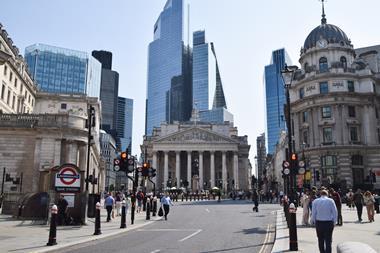The insurance industry is better placed than banking to weather the financial crisis
In the 2008 investment race, the tortoises beat the hares. It was the worst 12 months for investors in most people’s lifetimes – a financial cataclysm, the consequences of which are yet to be fully worked out.
Although originating in credit markets, the financial tsunami was also devastating for equities and corporate bonds. Investors lie disoriented, battered and bruised.
The crisis also exposed the ignorance of company leaders about the risks they were exposed to. For example, AIG made less than 1% of its revenue from credit default swaps, yet its involvement with these derivatives cost the entire company.
Reinsurers have been hit too, but they fared better than the banks. Insurers’ financial structures are more conservative and they have lower asset-to-equity ratios (about 5:1 for many P&C insurers, compared with 30:1 or 40:1 for many banks).
Guy Carpenter calculates that 18 of the world’s largest reinsurers (excluding Lloyd’s vehicles, many of which have yet to report) lost $20bn (£13.6bn) in shareholders’ equity in 2008 and ended the year with 18% less shareholders’ equity than they started it with.
This is bad but it is not terminal, as can be seen from reinsurance rates. Although there has been upward movement, especially in peak zones, there has not been a sharp upward spike in pricing such as one might expect were the sector in deep trouble.
Reinsurers differ widely in their investment strategies and range from the very conservative, such as companies at Lloyd’s, through to the more aggressive, such as Swiss Re. Conservatism is clearly the winning policy. Swiss Re recently lost its chief executive after announcing huge investment losses. Higher-risk approaches may have been partly motivated by an attempt to offer lower reinsurance rates, and thus grow market share.
Most reinsurers have been relatively protected in the financial crisis for three reasons. First, they are protected by the constraints under which they invest. Strategy is not just about maximising returns; it is about satisfying shareholders, boards, regulators, auditors and rating agencies. Reinsurers are also generally more conservative investors than mutual funds or pension funds, with their portfolios comprising 80% to 85% bonds.
Second, unlike general investors, reinsurers must manage their portfolios with an eye to future insurance liabilities. This also tends to make them conservative. Reinsurers need bonds to come due when they need to meet the liability. Most property and casualty reinsurers prefer bonds of a three-and-a-half or four-year tenor, and are mostly in A or higher rated bonds, although they may also have higher-yielding BBB products.
Third, reinsurers’ liabilities are not liquid, so unrealised losses cause less pain. Depositors at a bank can demand their money back immediately, but policyholders cannot cash in their policies. Unrealised investment losses hurt reinsurers less acutely than a major natural catastrophe, which makes a more immediate demand on cashflow.
These factors mean the insurance industry is better placed then the banking sector to weather the financial crisis. Those pressing for tougher regulation of the financial services sector should bear this in mind.
Key points
• All investors suffered in the financial cataclysm of 2008
• Conservative investment strategies helped protect most reinsurers
• Reinsurers have suffered a painful but not mortal blow from investment losses
Postscript
david.sandham@globalreinsurance.com
Hosted by comedian and actor Tom Allen, 34 Gold, 23 Silver and 22 Bronze awards were handed out across an amazing 34 categories recognising brilliance and innovation right across the breadth of UK general insurance.













































